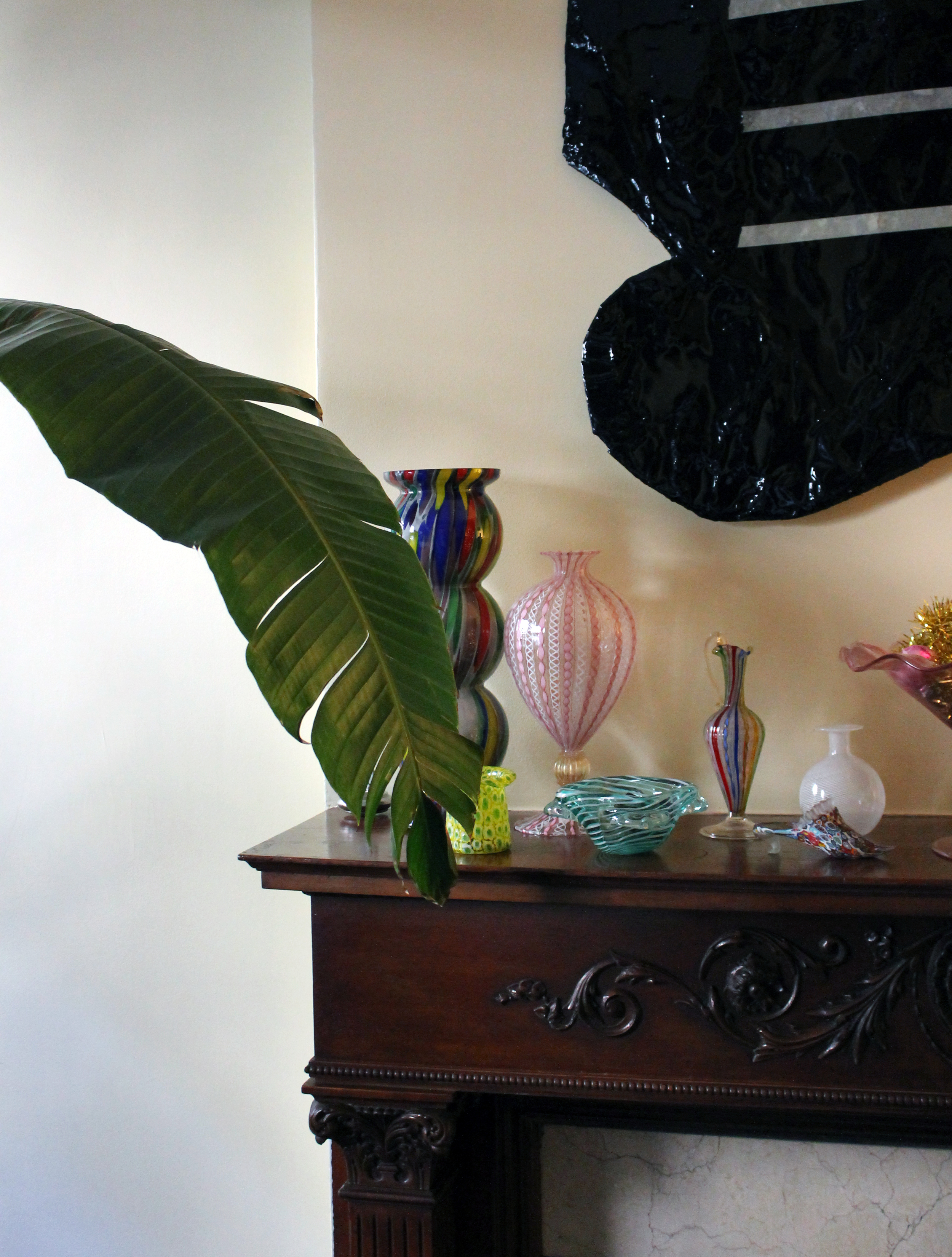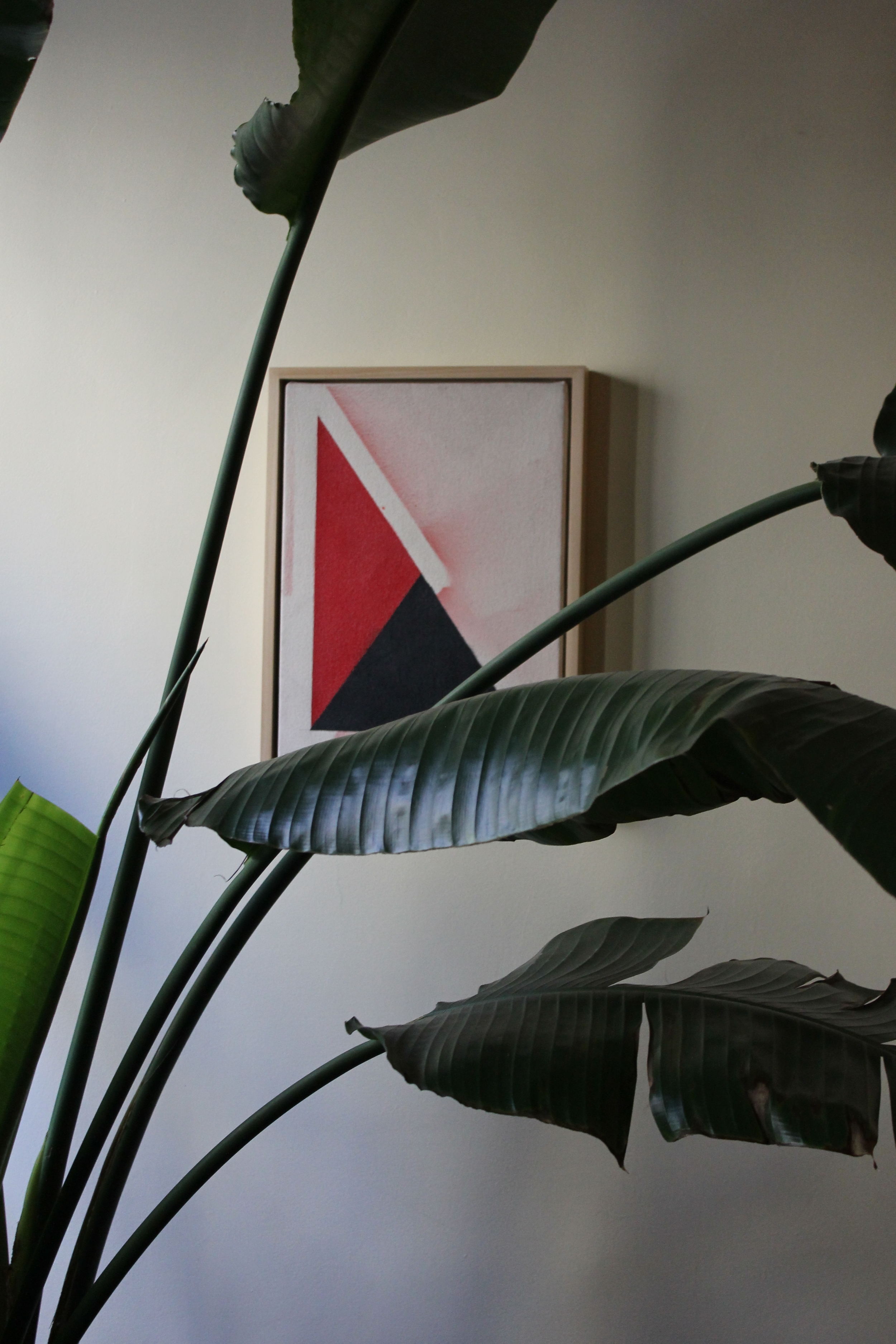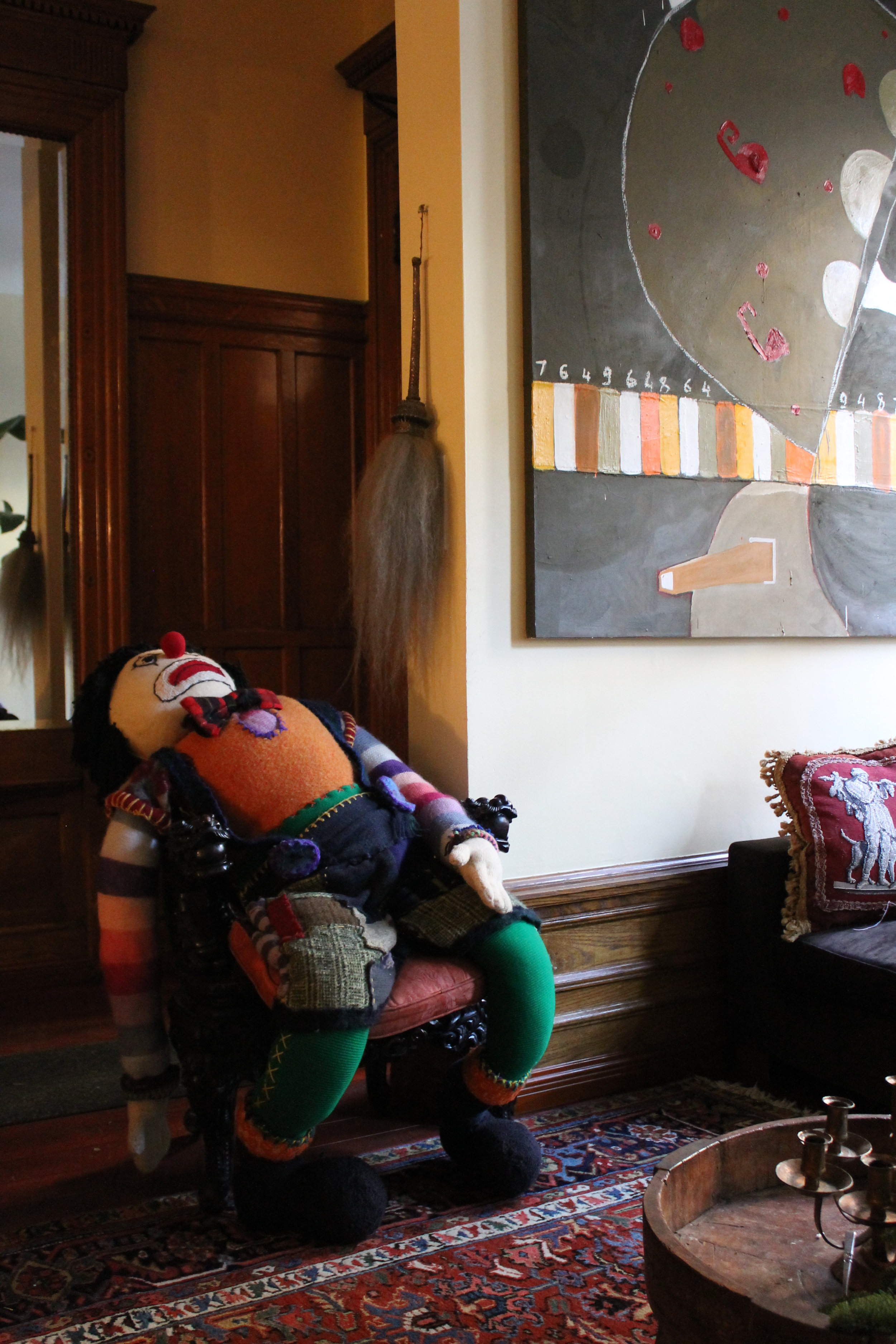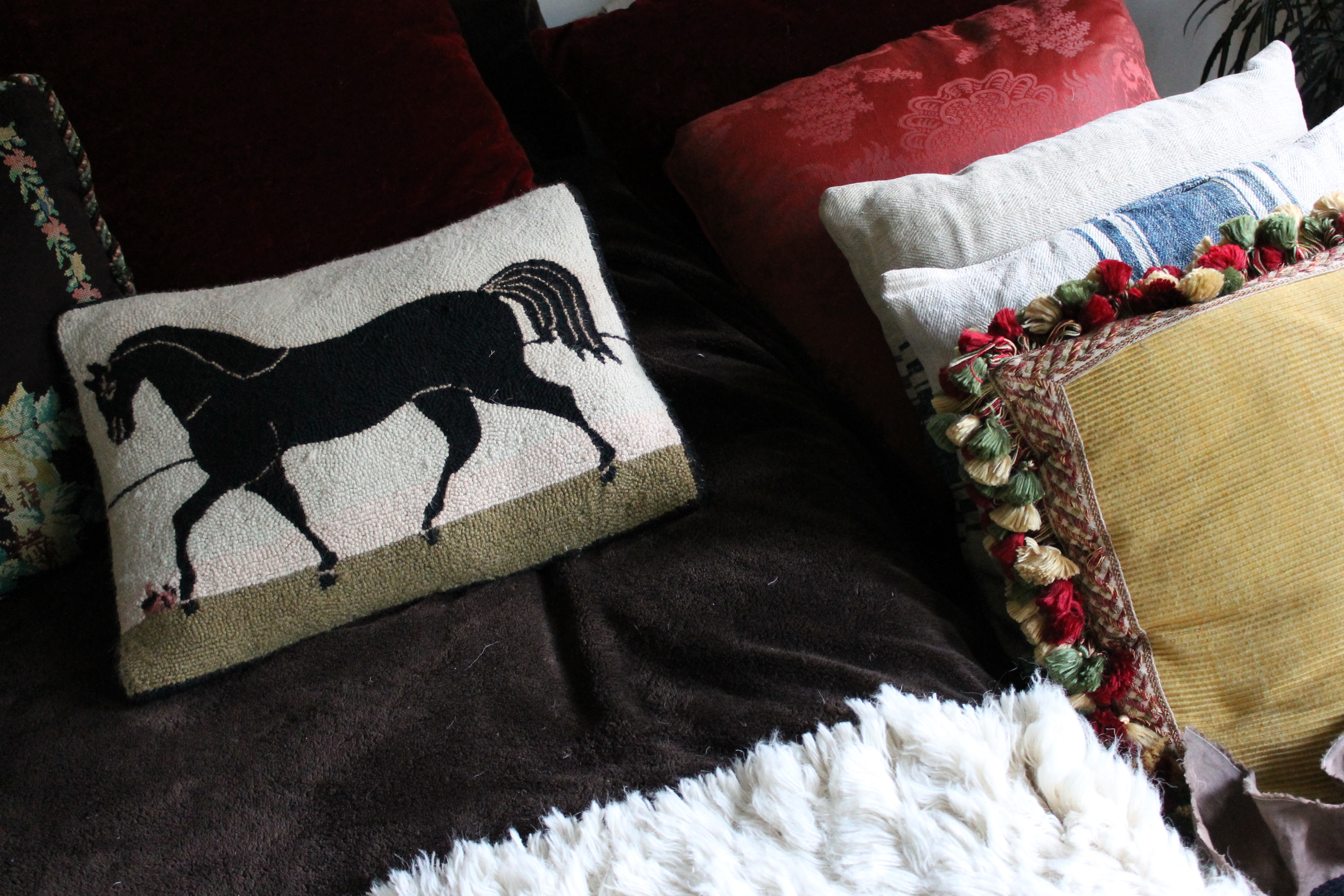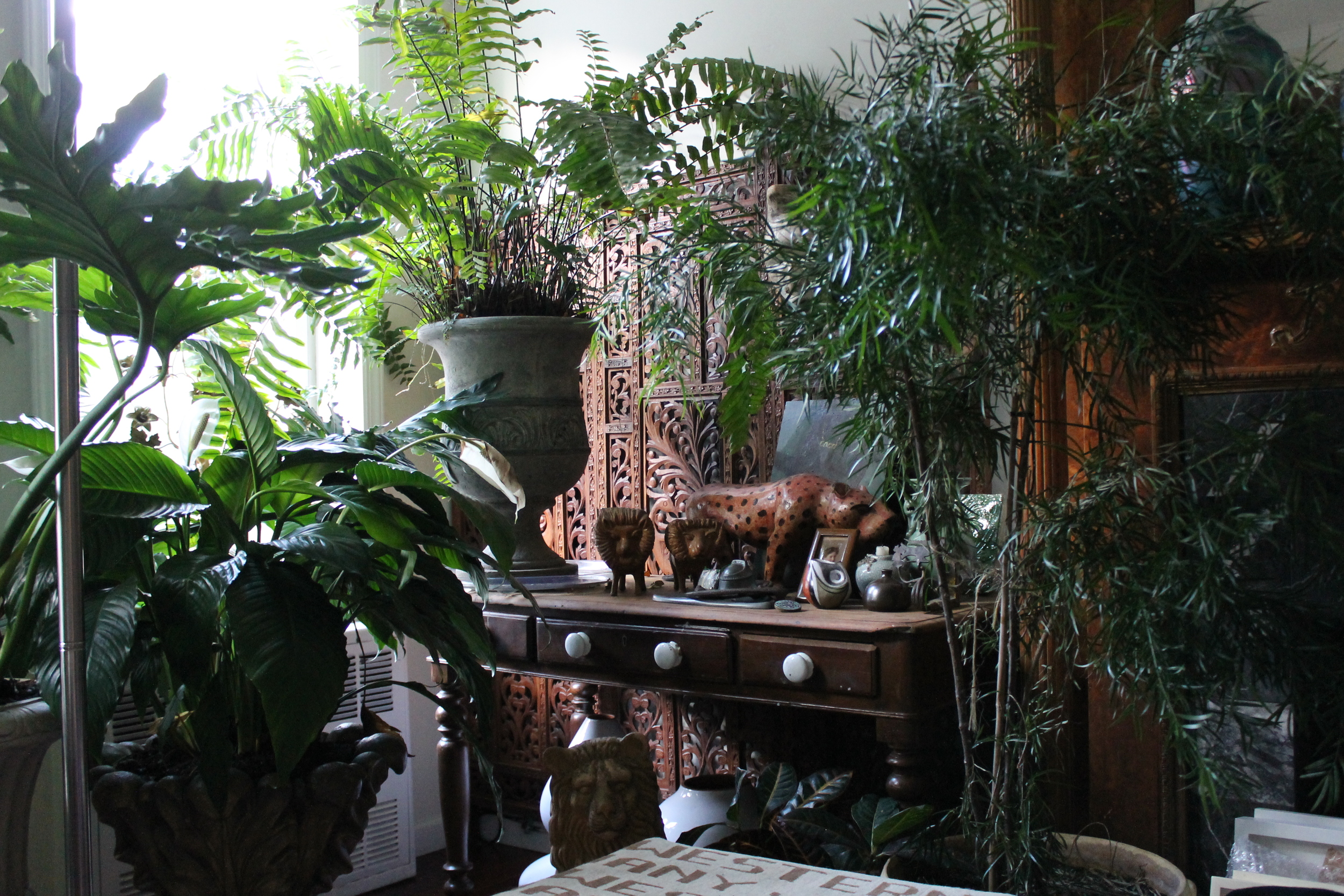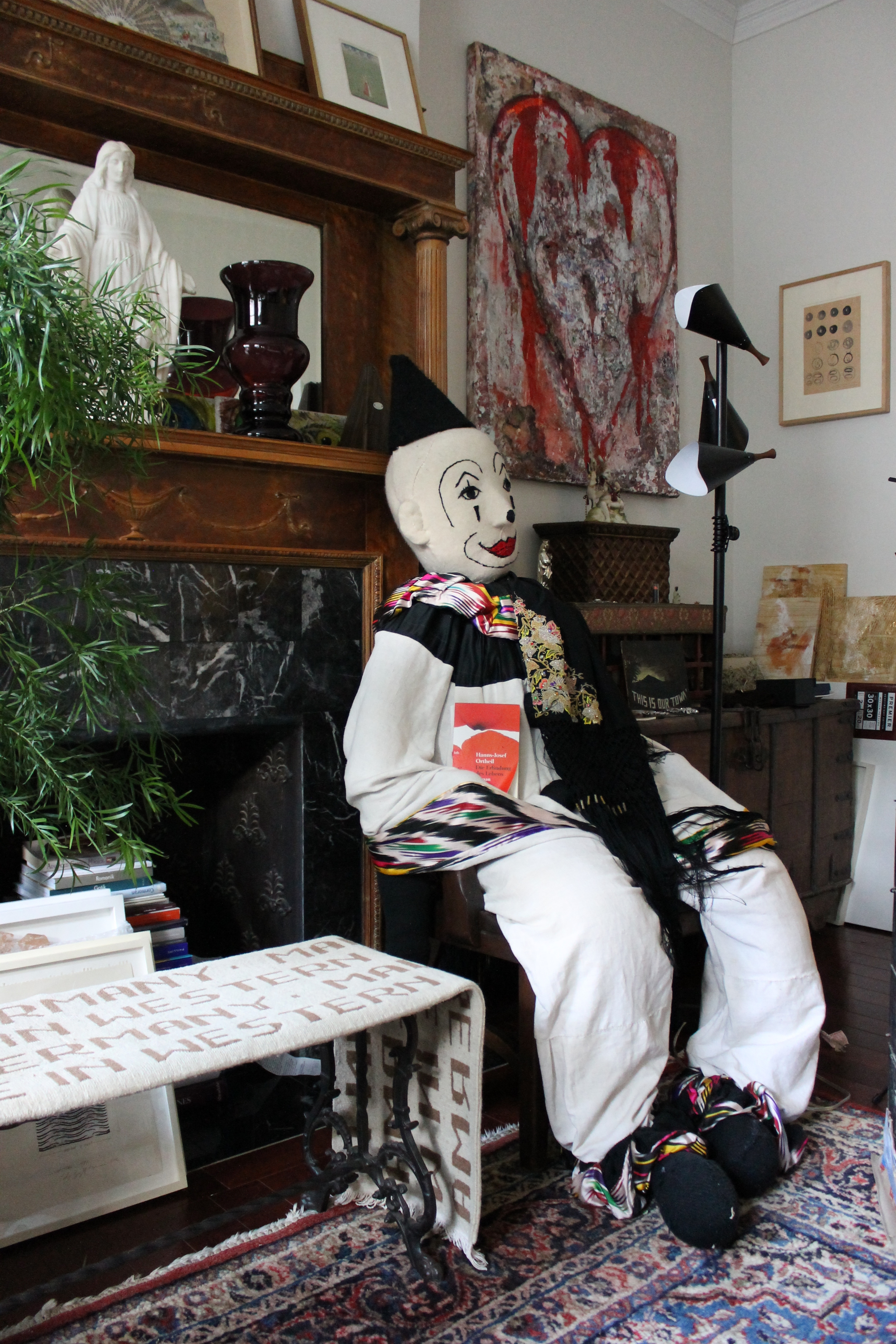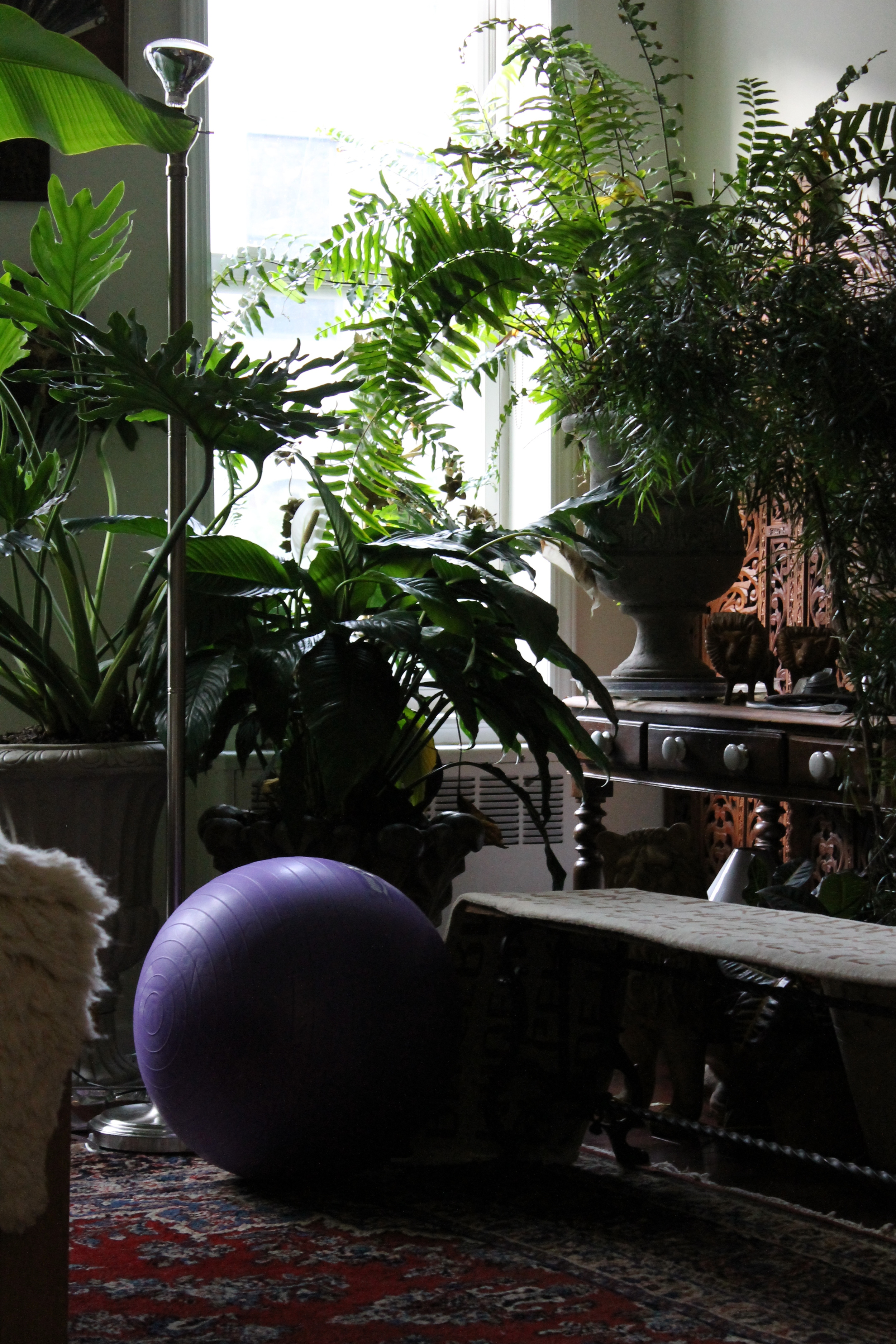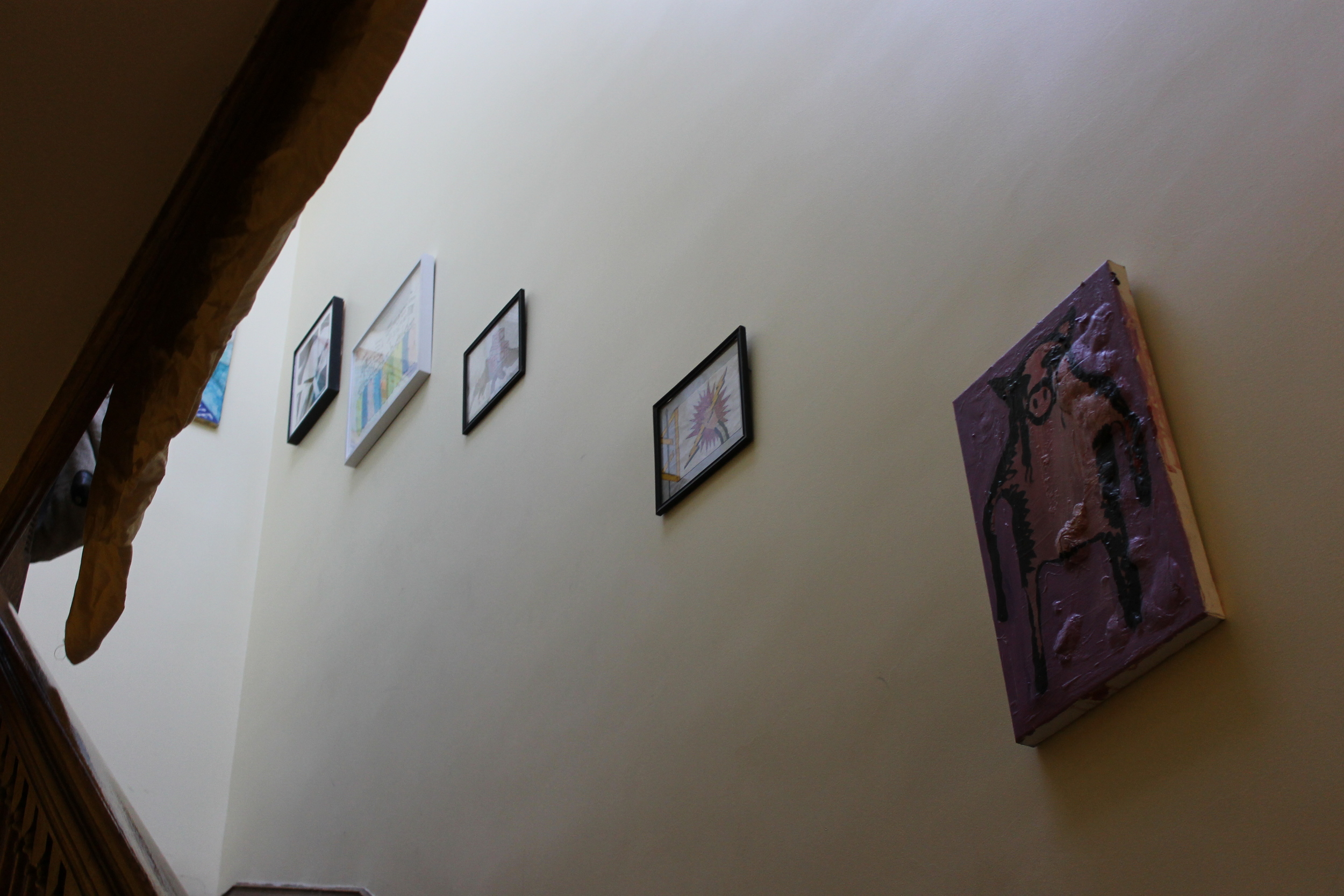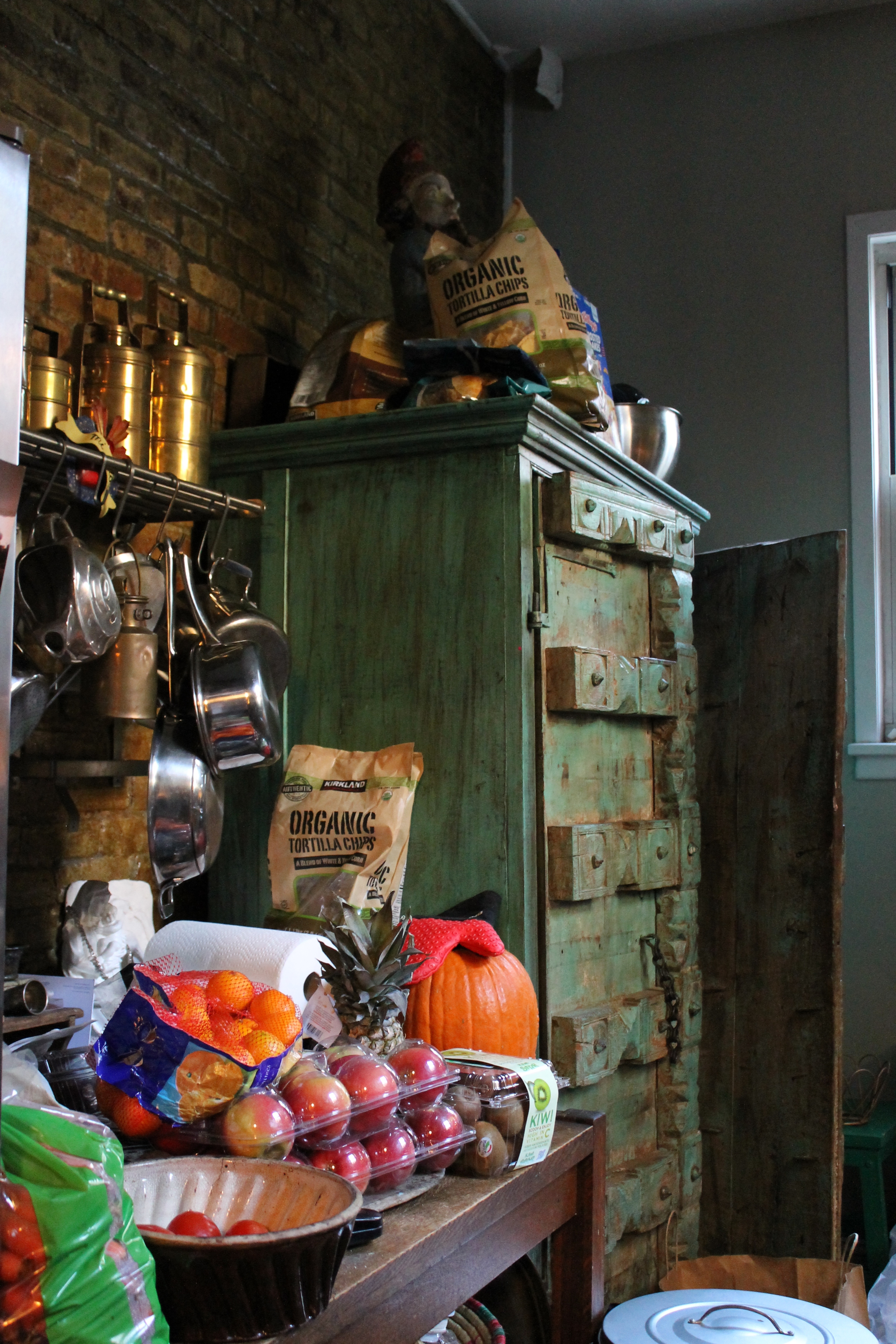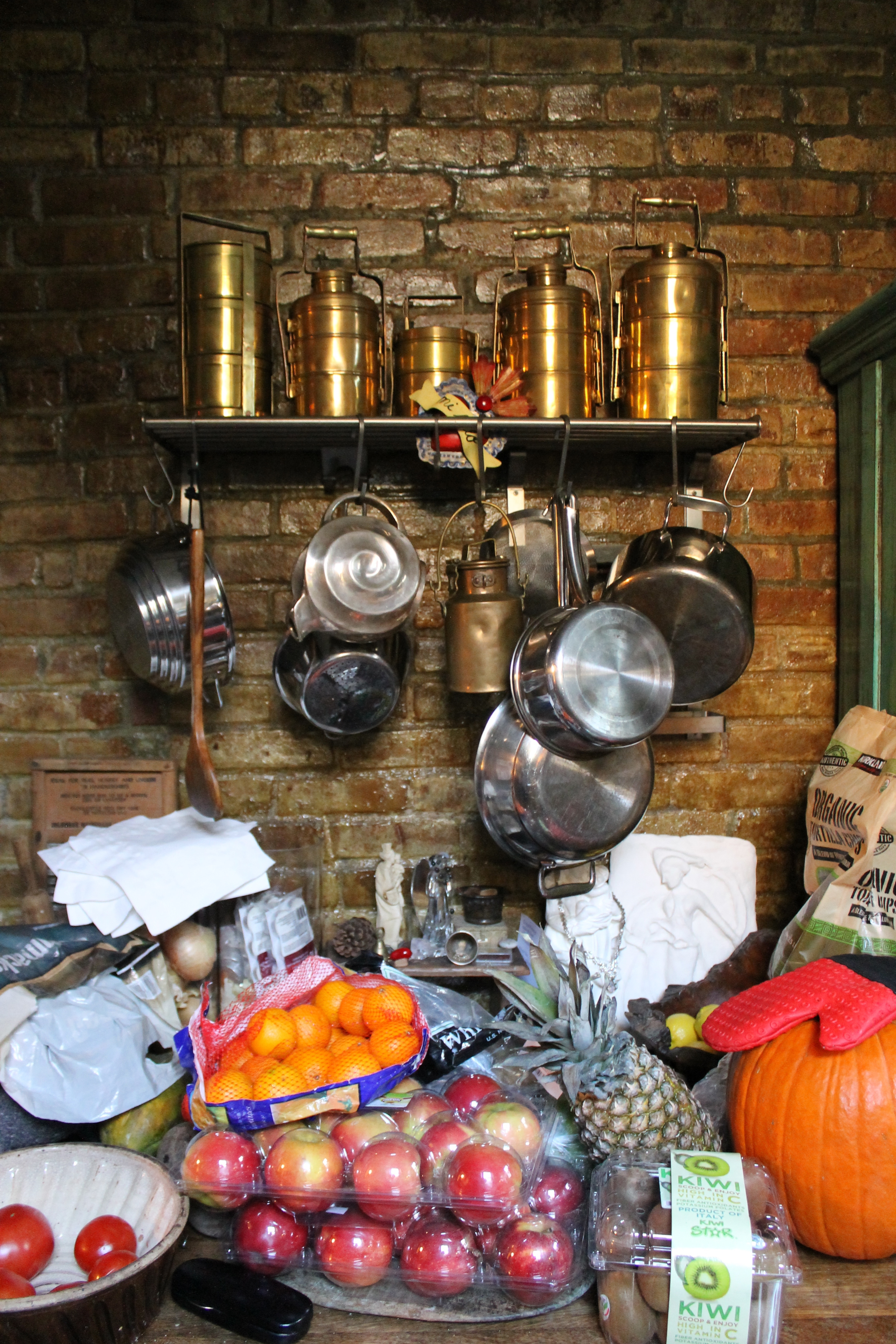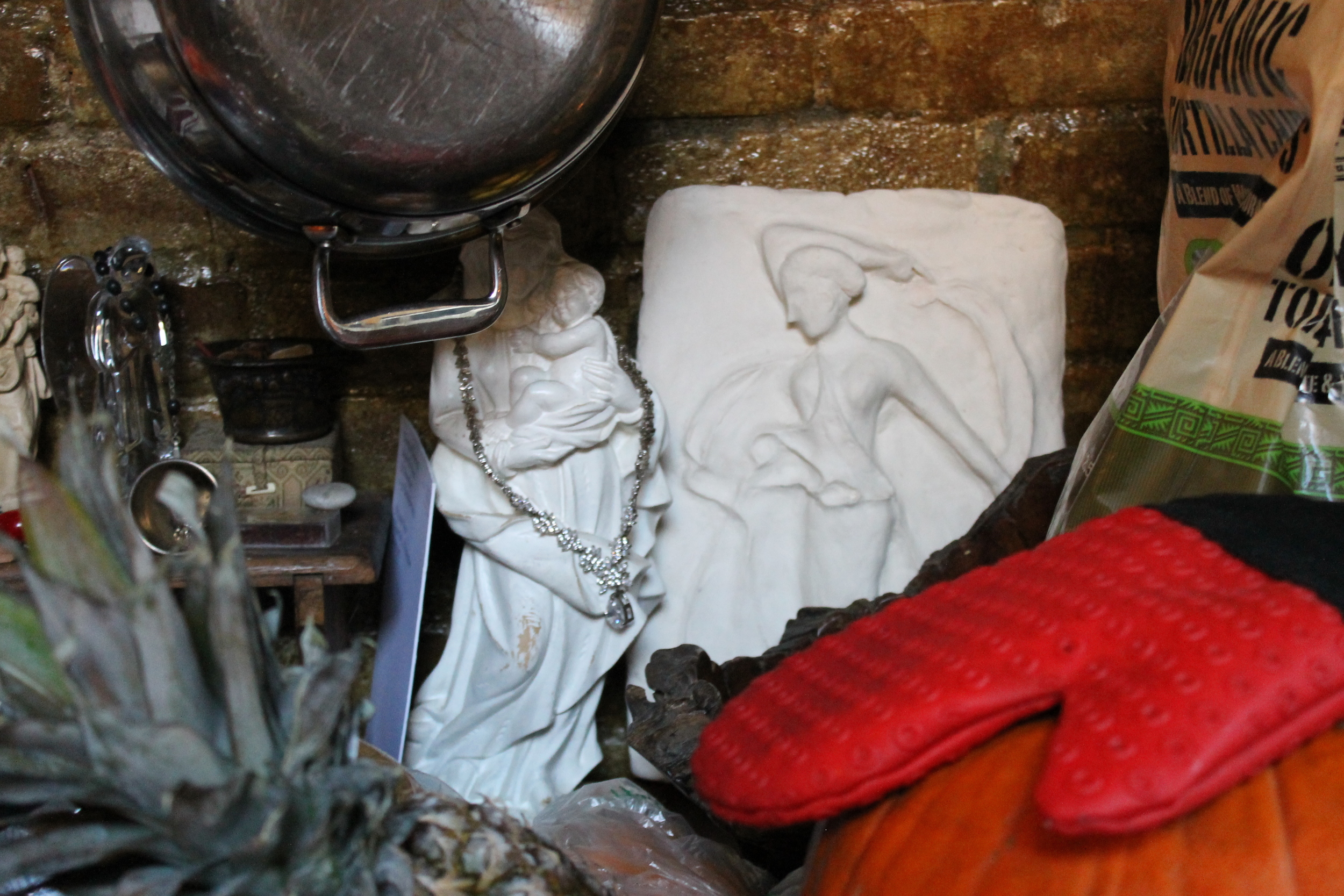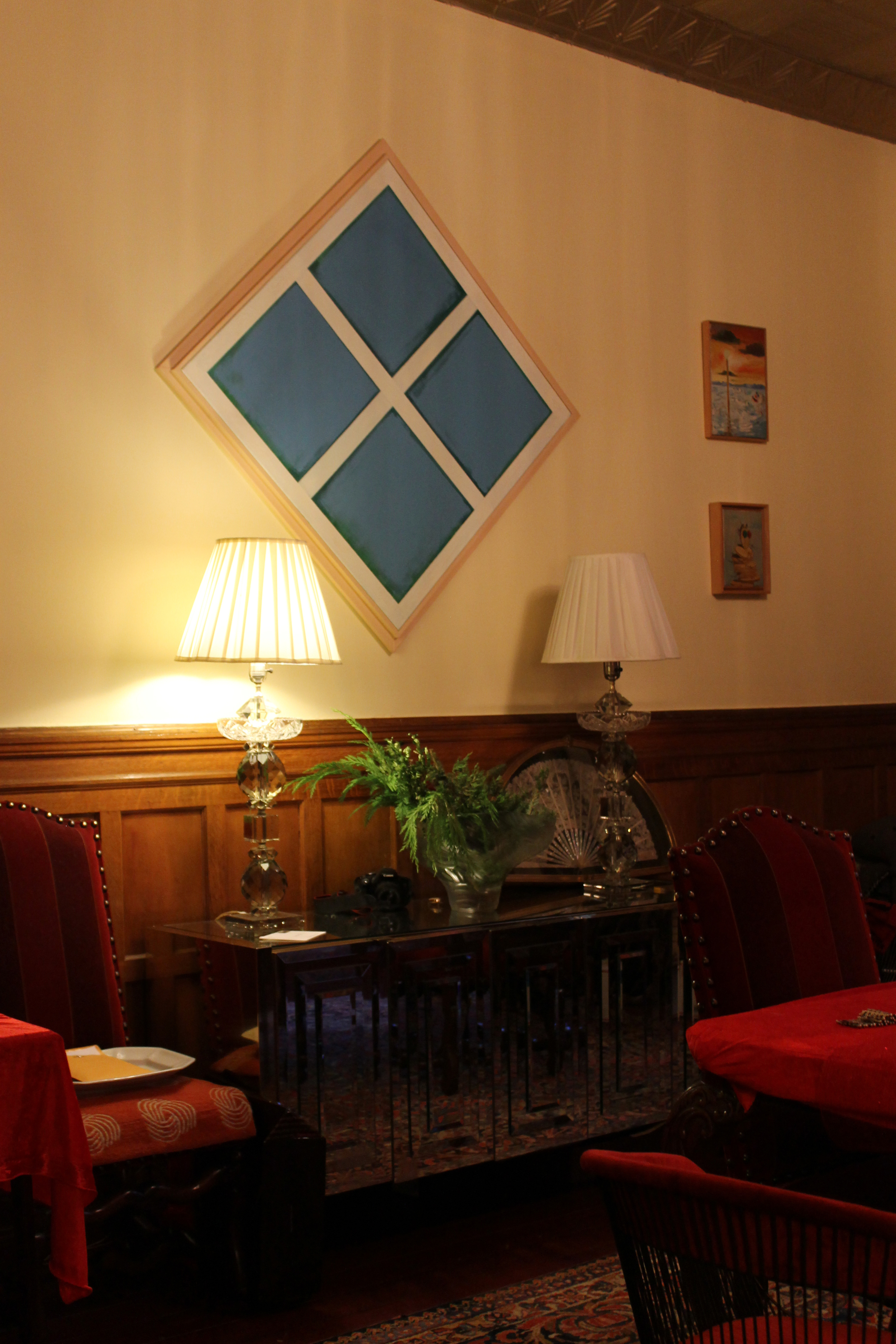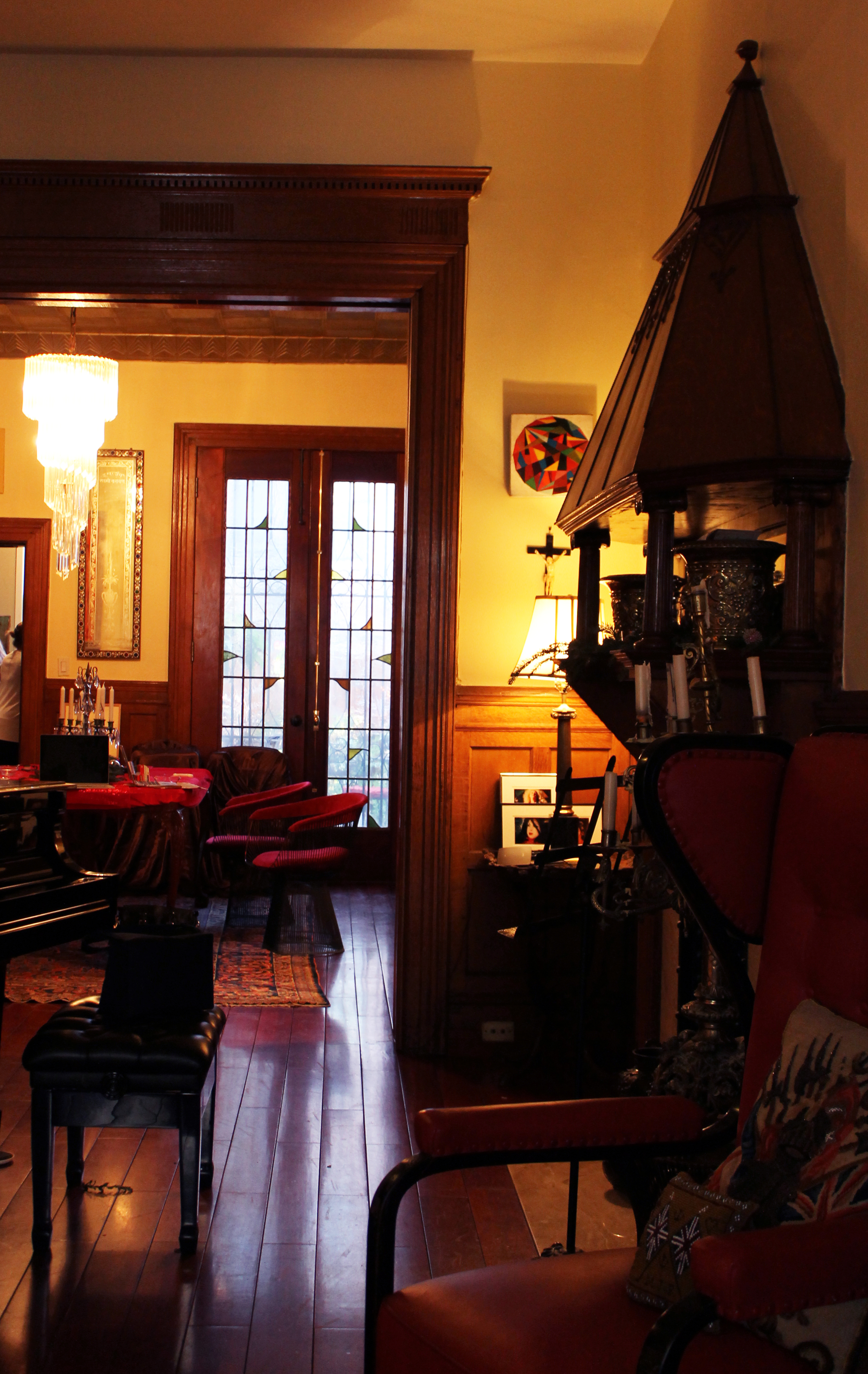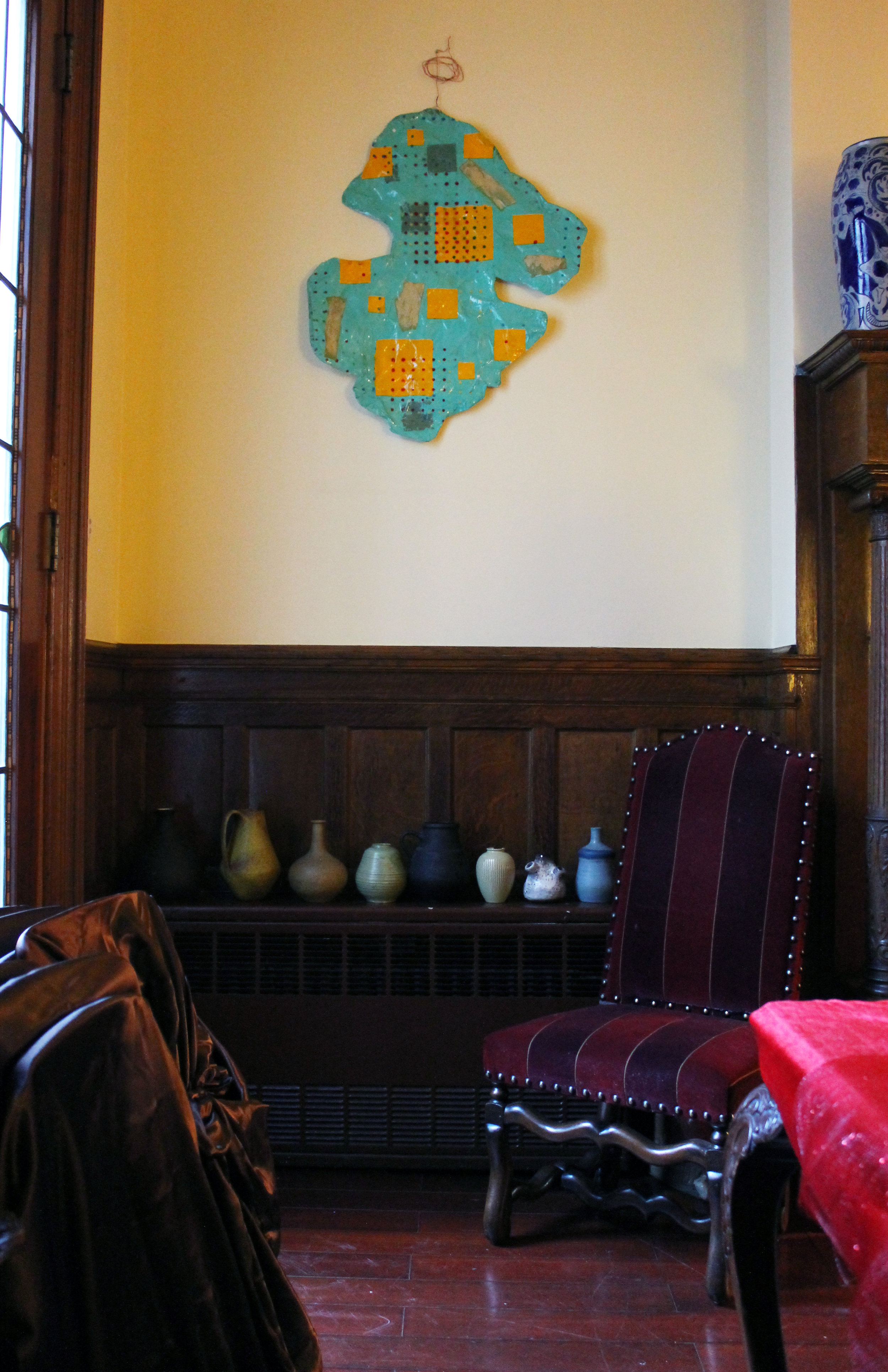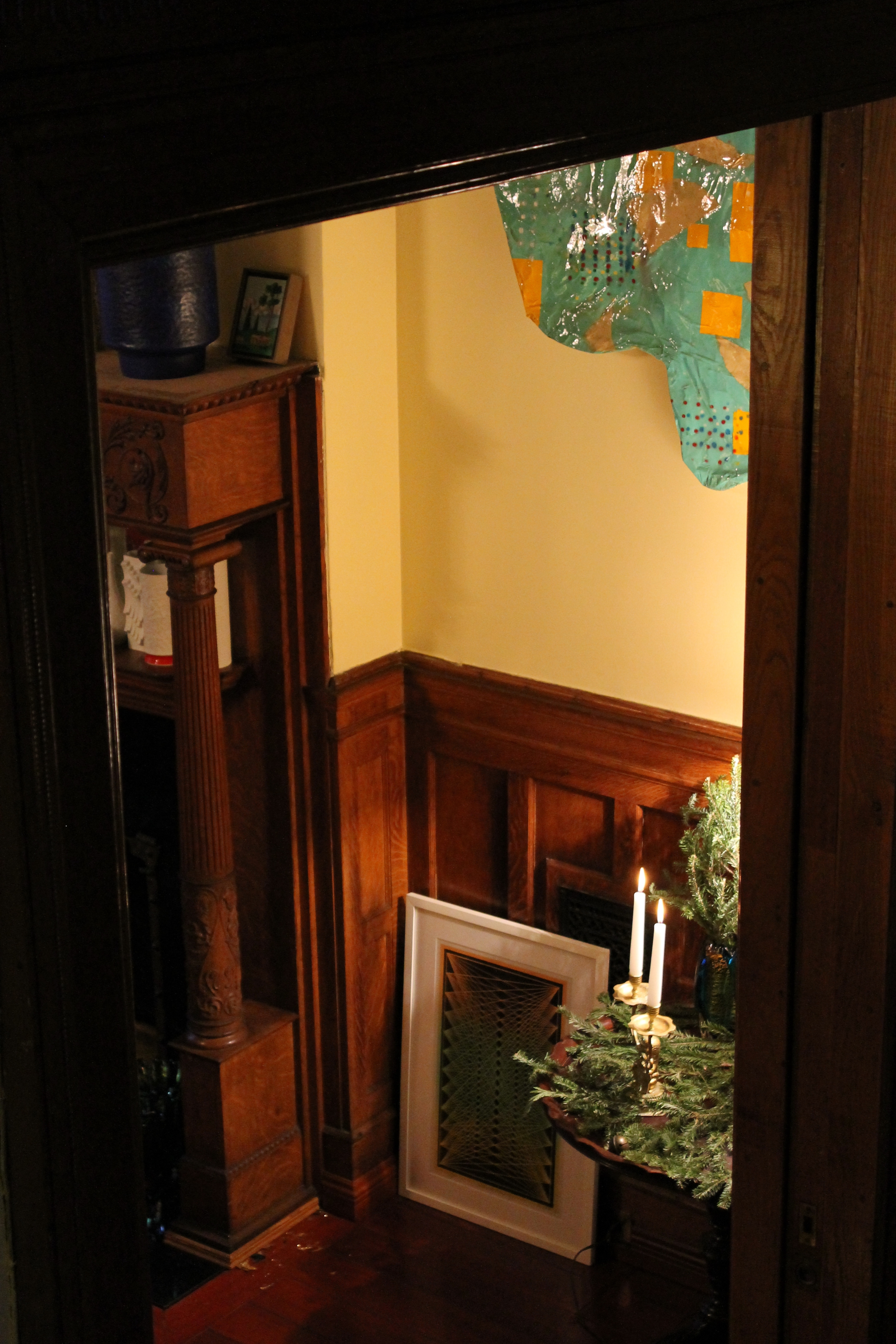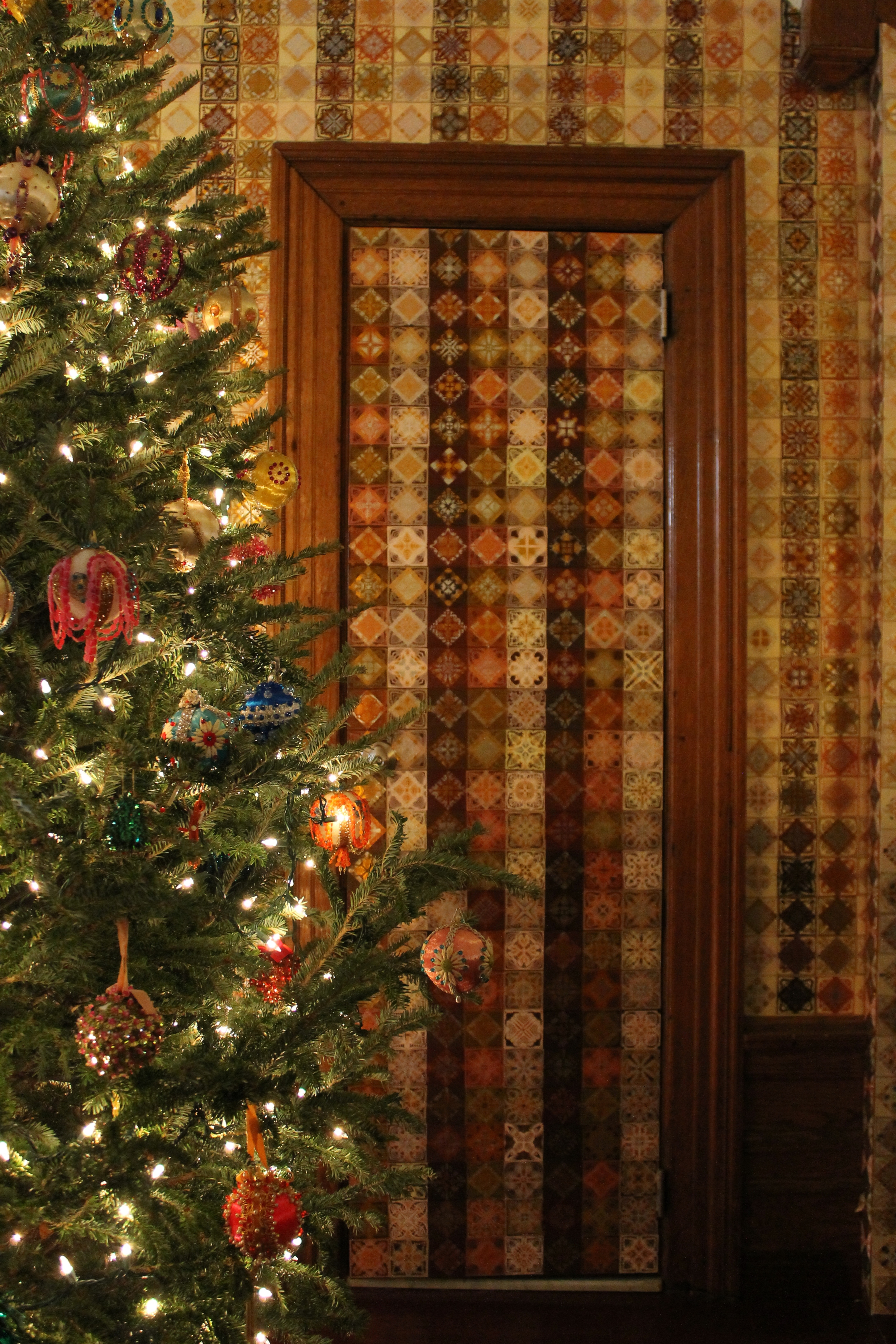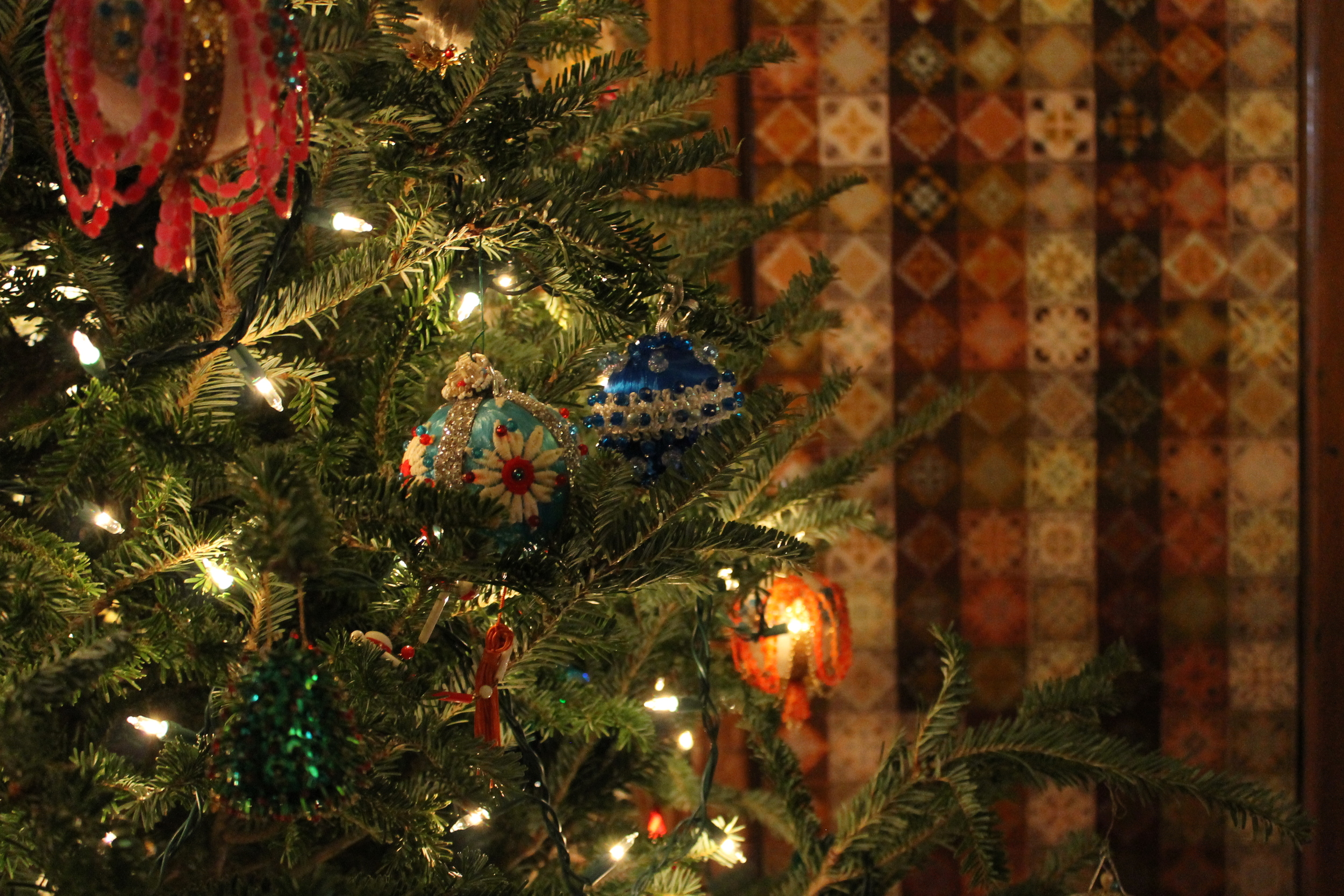Singh City: Christmas 2015
Petra Singh, born in Augsburg, Germany, now resident in Harlem, New York City, is a peripatetic homemaker supreme.
The word homemaker is maligned in our time, smacking of sugary 1950s constraints on women’s lives. But when we regard homemaker as the compound word that it is, stripped of connotation, we realize it is regal: both Home and Making are preoccupations of the modern mind, which searches restlessly for creative expression in leisure time, Bohemian escape from corporate culture, flight to the abode as autonomous sphere in a rule-bound world. When I consider “homemaker” in the positive sense of a high aesthetic in everyday life, I remember the 19th century neurologist Dr. Charcot, Freud’s teacher, whose private passion, shared with his wife and daughters in Paris, was for decoration, for their house as locus of dreams made material. In a three-story Harlem townhouse, Petra Singh has manifested her own dreams, her yearning to create what Mario Praz, writing of his Roman apartment, entitled The House of Life.
I first met Petra twenty years ago in Brussels, where she and her late husband, the art collector Ranbir Singh, were homesteading a house of my dreams, a Jugendstil mansion replete with serpentine boiserie and Delft tiles. Every time Petra entered the house’s Carrera marble-clad vestibule, she reflected, with elation, “How happy am I!” It was almost a ruin at the time I saw it; they would restore it to all its fin de siecle glory.
After long wanderings, from Brussels to San Francisco then to Manhattan’s Chelsea, Petra has alighted in Hamilton Heights, Harlem’s precinct not only of stately brownstones, but of Dutch-inspired and Aesthetic Movement gabled houses of mellow red brick. Petra inhabits her brownstone as a captain inhabits a ship, secure in the staterooms yet afloat in foreign waters. There is no need to go on deck.
A bevy of young women, Petra’s daughters Yasho and and Celeste and their friends, bring victuals, Champagne, music and much laughter into Petra’s generous domain, a grand bourgeois Arts & Crafts inflected interior. In her small traditional New York kitchen Petra sometimes prepares fragrant Indian dishes she learned from Ranbir; other feasts consist of ham glazed in maple syrup and chili (a la Jacques Pepin) accompanied by warm German potato and cucumber salad, dressed in oil and lemon juice rather than mayonnaise.
In the past year, inspired by her friend, the Canadian violinist and music critic, Jacqueline Vanasse, and by her daughter Yasho’s boyfriend, Christopher Beroes-Haigis, a cellist, Petra launched her “Soirees”--evenings of ravishing classical music--piano, cello and violin--performed by young, world-class musicians from China, Japan and Europe. Christopher, still a senior at Bard College, is a frequent performer at the Soirees. His teachers and mentors include the composer Joan Tower and the cellist Andrey Tchekmazov. Petra’s patronage includes serving on the board of the Omega Ensemble, an organization granting stipends to promising young classical musicians.
The sounds of the Soirees are not those of chamber music. Within the space of Petra’s paneled living room, one feels transported to a grand symphony hall, in which the music sometimes reaches a sublime frenzy not usually associated with the classical. When I heard a Chinese violinist play, I thought of H. P. Lovecraft’s occult story, The Music of Erich Zann, in which an aged, mute violinist plays strange melodies of an otherworldly nature.
Since 1987, Petra has also presided over Equator Studios, a company producing artists’ carpets, fabricated in limited editions in Nepal, commissioning well-known contemporary artists to create the designs. She is currently in the process of renewing production of Equator’s original editions, while also commissioning a new generation of artists to make designs for the carpets. In 2016, a large number of the carpets will be included in a major exhibition at the Cleveland Museum of Art. Petra has also joined forces with Cornelia Lauf, director of Rome’s curatorial organization Golden Ruler, to curate a series of artists’ carpets.
The Singh house, capacious yet cozy, contains many small shrines, reflecting the Indian-German heritage of Petra’s daughters. Indian and Tibetan artifacts vie with German decorations that sometimes exhibit remarkably similar motifs, as in the portable Tibetan altar decorated with red and white floriated ornament, paired with a German metal table ornament with identical enameled flowers. Petra herself is ecumenical in her devotions: Madonnas and Buddhas, photographs of Pope Francis and Mother Meera are illuminated by crystal candelabra with tall German candles, burning day and night, which Petra brings from her trips to Europe. Expressed by these votives is the meaning and value--both spiritual and material--Petra imparts to her home.
Early 20th century and mid-century furniture--a scarlet upholstered armchair by Wiener Werkstatte designer Josef Hoffmann, wire chairs by Warren Platner--seem at home in the living and dining rooms, each, in Harlem turn-of- the-century tradition, equipped with a fireplace surrounded by a carved mahogany mantelpiece. Petra rotates the display of her sizeable collection of contemporary art, most recently launching an exhibition of artist Mark Dagley’s paintings on her walls.
Upstairs, Petra’s bedroom invites repose and meditation, stirred by a retablo of her own artwork and a varied array of precious objects: Hermes handbags, diamante jewelry from the 1920s, a marble Shiva, spectral African masks and intricate 19th century German family keepsakes.. Sophistication abides with spirit, style with the solemn beauty of relics.
Throughout the house, lush plants surround the inanimates. .I am sometimes reminded of the mysterious New Orleans house inhabited by Charlotte Rampling’s character, Margaret, in the 1987 noir movie Angel Heart, dense with talismans, charms and amulets, dimmed by the twining shadows of plants. I sometimes forget how very gothic Petra’s interior is, discovering it anew when I venture upstairs.
Petra’s narrow kitchen and brown velvet couch are places I, and many others come to continually to sate our appetites--for her excellent cuisine, conversation, and kindness--for all the ineffable qualities that exalt her home. Like an inadvertent follower of Charcot, she has single-handedly reinvented the house as cosmos of predominantly female imagination and life, womb and shelter for the cultivation of art and of life’s most momentous events: friendship and love.

